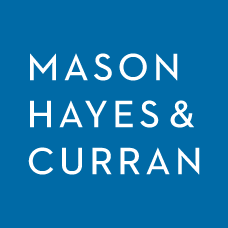Gerard Kelly: AI in e-Discovery — just how smart is it?

Gerard Kelly
Gerard Kelly, partner at Mason Hayes & Curran, examines the potential impact of new AI-powered tools on legal practice.
E-discovery is the process by which traditional discovery, a process in litigation whereby the parties exchange and review potentially relevant documents, has been increasingly automated through the use of AI and specifically Technology Assisted Review (TAR).
TAR was first approved in Ireland by Judge Fullam in Irish Bank Resolution Corp. v Quinn [2015] IEHC 175. TAR combines predictive coding, a technology which produces a relevance score for documents using algorithms, with human expertise.
The steps involved in TAR were set out by US Judge Andrew Peck in Da Silva Moore v. Publicis Groupe et al, No. 1:2011cv01279, as follows:
“Unlike manual review, where the review is done by the most junior staff, computer-assisted coding involves a senior partner (or [small] team) who review and code a ‘seed set’ of documents. The computer identifies properties of those documents that it uses to code other documents. As the senior reviewer continues to code more sample documents, the computer predicts the reviewer’s coding. (Or, the computer codes some documents and asks the senior reviewer for feedback.)
When the system’s predictions and the reviewer’s coding sufficiently coincide, the system has learned enough to make confident predictions for the remaining documents. Typically, the senior lawyer (or team) needs to review only a few thousand documents to train the computer.
Some systems produce a simple yes/no as to relevance, while others give a relevance score (say, on a 0 to 100 basis) that counsel can use to prioritize review. For example, a score above 50 may produce 97% of the relevant documents, but constitutes only 20% of the entire document set.
Counsel may decide, after sampling and quality control tests, that documents with a score of below 15 are so highly likely to be irrelevant that no further human review is necessary. Counsel can also decide the cost-benefit of manual review of the documents with scores of 15-50.”
Compliance with discovery — a balancing act
Irish courts have long accepted the use of technology-assisted tools to reduce the burden in large-scale discovery operations.
Judge Clarke endorsed the use of search tools as a means of reducing the number of documents that require physical review, provided that a party acts in good faith (bona fide), in Thema Intl. Fund v HSBC Inst. Trust Services (Ireland) Ltd [2012] 3 IR 528. Referring to the balancing exercise involved in discovery Judge Clarke noted the following:
“It needs to be recalled that there is, in reality, a balancing exercise involved here. The whole reason for a search, of the type with which I am concerned, is that the most time consuming and costly part of the process is the physical review of the remaining documents (that is those remaining after the selection process) by trained lawyers on a document by document basis. Clearly the selection process will not have achieved its end if it does not significantly reduce the number of documents that need to be subjected to that costly direct review. If too many documents remain for review which turn out not to need to be discovered (so called false positives), then the cost and time of discovery will unnecessarily be lengthened. The whole point of narrowing the universe by means of key word searches is to reduce the number of documents that require direct personal review. If the key words are too wide, then the selection process will not do that job. If the key words are too narrow (or, perhaps, deliberately or inappropriately skewed), then same is likely to enhance the risk of false negatives. Some reasonable balance has to be achieved between those two ends”
Judge Clarke’s approach was also approved by Judge Quinn in Kelland Homes Ltd v Ballytherm Ltd [2019] IEHC 46.
Why is e-discovery significant?
In a profession where billable hours are all-important, e-discovery can offer a more efficient option in terms of both time and cost when compared to lawyers having to read individual documents.
Imagine a large-scale discovery operation without the assistance of artificial intelligence – with a universe containing five terabytes of documents, roughly 375 million pages. Each lawyer now has 75 million documents to review, which at a rate of 50 documents per day, will take 1.5 million days to complete. Now imagine 500 lawyers were assigned such a review, and they worked exclusively on the discovery, allowing them to review 500 documents a day.
It will now take 500 lawyers only 1,500 full work-days to complete the review, or just over four years if they work every single day without pause.
The reason for this exponential increase in the size of document universes is that they can now contain potentially millions of emails, text messages, WhatsApp messages, videos, telephone calls and more, between thousands of individuals, whereas previously only paper documents were discoverable.
In the Thema case Judge Clarke noted the growing concern of the costs of discovery in complex litigation which typically can amount to 50 per cent of the total cost of litigation. The judge also observed that the addition of time to comply with discovery can end up prolonging the time until the case can commence.
What can e-discovery achieve?
E-discovery software can be used to drastically ease the discovery burden through machine learning. Machine learning such as TAR is a form of artificial intelligence which allows computers to learn something that they have not been specifically programmed to do, through making educated guesses. For instance, once the software knows that certain combinations of words or phrases in a document are relevant, it can teach itself to mark those documents as relevant to a discovery category. Quality control can also be facilitated, whereby lawyers review a randomly selected batch of documents deemed to be relevant or not relevant by the software and consider whether any further refinement of the software should be made.
Another advantage of TAR is that by definition, it is not susceptible to human error. It will not make a mistake or fail to observe a crucial piece of information that a human might overlook. A certain degree of human input is still required however, and e-discovery is not yet a magic bullet for large discovery projects.
Humans are better able to grasp context than software can and may use information which is not in the document universe to assess relevance. Nevertheless, technology is constantly improving.
What advances are being made?
As with all technology, AI for discovery is advancing. For example, work is ongoing to make software able to:
- redact certain words (for example, a name) from audio or video correspondence automatically;
- recognise communications that are out of character or are using coded language;
- identify patterns not obvious to the human eye, such as an unusually high number of communications between certain people in a given timeframe; and
- protect sensitive data in line with GDPR requirements.
Additionally, AI can be used in a pre-discovery phase of litigation to show lawyers the potential strengths and weaknesses of the document universe in their case and to inform their advice to the client going forward. It can also be used for non-contentious regulatory investigations and Freedom of Information (FOI) requests.
All of this automation will continue to make lawyers’ lives easier by freeing up resources and accelerating the discovery review, in addition to being cheaper for clients. Ireland is already considered a leader in e-discovery, having been much quicker to embrace TAR than the legal profession in the United States, while the discovery phase of litigation is markedly different in civil law jurisdictions.
Conclusion
All things considered, TAR will not yet entirely replace humans in the discovery process. However, the relentless advancement of the design and capabilities of the software will make it an increasingly vital tool in the lawyer’s toolbox when working on the sort of enormous discovery universes that exist today.

- Gerard Kelly is a partner and head of the intellectual property law team at Mason Hayes & Curran LLP. This article first appeared on the MHC website.









